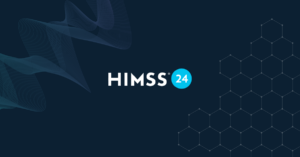In the second of this two-part blog series, we sat down with Virginia Long, PhD, Predictive Analytics Scientist at MedeAnalytics, to delve deeper into the newly released eGEM study.The study showed that using predictive modeling with cluster analytics on patient-reported data has the power to pinpoint populations that may need specialty services prior to care delivery. Virginia also provided her perspective on the promise of predictive analytics tools and the direction of data analytics in the next five years.
Q: Can you share some of your thoughts on the eGEM study? Are there limitations to the findings?
A: The Kaiser researchers use of combined data analytic techniques, using the predictive tool (decision tree) along with the clustering method, is a very nice way to explore the data. Predictive methodologies can sometimes be difficult to interpret, however, so the addition of clustering to understand how patient factors grouped together provided an additional layer of insight.
The study population was limited to 25% of the highest cost members, which means that it was limited to new patients, most of whom were enrolling ostensibly as a result of the Affordable Care Act. This is not a sample that is necessarily representative of all of Kaiser Permanente Colorado membership. However, compromise of generalizability because of sample bias is not a reason to discount these findings. The report does a great job of discussing how the findings from their data analytics project used the collected self-report data from new members and how it was useful in understanding the types of people who were going to be high cost utilizers. The researchers also discuss the difficulties in deploying the findings in a meaningful way: “However, identifying high need individuals is the easy part. Developing and implementing successful (and tailored) interventions requires clinical and operational engagement, an appreciation of system and patient context, and effective allocation of resources.”
Q: Predictive modeling played a big role in this study. What do you see as the most promising application(s) of predictive analytics?
A: Predictive analytics tools are particularly interesting when they are put in place as a practical decision tool to aid in allocation of resources. As the Kaiser study demonstrated, patient information can be used both in planning for services or care and in the design of intervention plans. Predictive analytics is the tool that will move an organization from reactive to proactive policy and program development. For those times when an organization is saying “if only we could know this ahead of time…,” predictive analytics offers wonderful opportunities. In this way, predictive tools and other analytic methodologies to understand and group patients is necessary for any population health initiative. Population health is about understanding our patients’ groups and subgroups—understanding what common factors tie these groups together and how we can solve challenges not just on an individual level, but at the scalable population level.
Q: Where do you see the data analytics industry going in the next 5 years?
Data analytics is going through a huge genesis and is currently experiencing the corresponding hype. In the next five years or so, as the work becomes accepted and commonly used, it seems likely that people will begin to understand that data analytics is not just about being able to code or about the tools or methodologies used. The industry will see data analytics more as the ability to use the various analytical tools to explore and understand important questions surrounding health care use, healthcare misuse, discrepancies in access to care, and how treatments or patient care can be fine-tuned.
For more on data analytics and big data, check out the insights from Virginia and our other experts here.
Get our take on industry trends
Another year, another great HIMSS!
HIMSS24 was a fantastic event, as always. One of our favorite additions this year was the Digital Health Technology Theme…
Read on...Optimize your midcycle for telehealth services
Telemedicine is now a permanent fixture in homes across America. A majority of healthcare organizations have established the technology necessary…
Read on...Three ways to improve patient retention in recovery programs
Deaths from drug overdoses have increased from ~1 per 100,000 in 1999 to ~4 per 100,000 in 2020.1 The introduction…
Read on...ACOs and value-based care in 2024: Four key questions and answers
ACOs have long been at the front lines of value-based care efforts. In a recent LinkedIn Fireside Chat, Andy Dé…
Read on...


